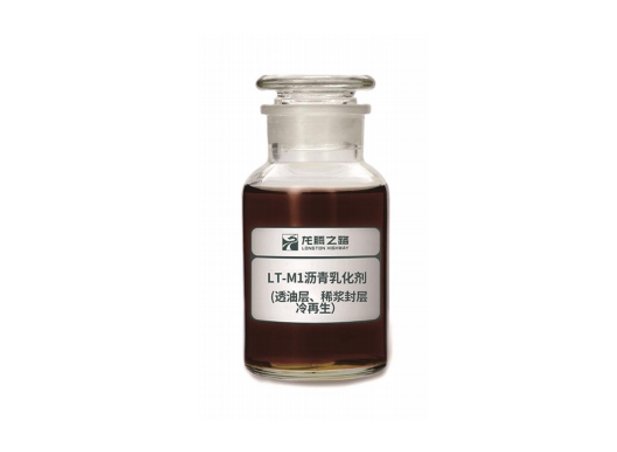1. Introduction to slow setting asphalt emulsifier
Slow setting asphalt emulsifier is a chemical additive that can slowly break emulsified asphalt (i.e. delay the separation of asphalt and water), mainly used in asphalt cold mixing technology that requires longer mixing time or construction window (such as cold regeneration, slurry sealing, etc.). Its core feature is to maintain stability during the construction phase and form a high-strength asphalt structure even after demulsification.
Slow setting asphalt emulsifier is a cationic surfactant mainly used for asphalt emulsification. By reducing the surface tension of asphalt and water, it mixes asphalt and water to form a water in oil liquid. The characteristic of slow cracking asphalt emulsifier is its slow emulsification speed, which is usually used in construction environments that require a long period of time to maintain the emulsified state. Slow cracking asphalt emulsifier (LT-M1) has excellent emulsifying performance and can emulsify various types and origins of asphalt. It has a wide adaptability to stone materials and has the characteristics of long mixing time, slow forming speed, and excellent adaptability in high temperature environments.
2. Type and Characteristics
Slow setting asphalt emulsifiers usually belong to the lignin amine cationic type, with relatively low prices, suitable for various mineral materials, especially with good adhesion to acidic mineral materials.
3. Usage method of slow setting asphalt emulsifier
Heat the water to 60-70 ° C, add the pre measured asphalt emulsifier to the hot water and stir evenly before use.
4. Scope of application of slow setting asphalt emulsifier
Slow setting asphalt emulsifier is suitable for various construction processes, including slurry seal, prime coat, cold mix bagged mixture, etc.
5. Main technical indicators of slow setting asphalt emulsifier:
(1) Appearance: Dark brown liquid
(2) Active ingredient content: 68%
(3) PH value: 4.0~6.0
(4) Dosage: 1.8-2.5%
(5) Packaging: 200kg/drum
6. The difference between fast setting and slow setting
The main difference between fast setting and slow setting asphalt emulsifiers lies in their demulsification speed. The demulsification speed of fast setting asphalt emulsifier is fast, suitable for situations that require rapid solidification; The demulsification speed of slow setting asphalt emulsifiers is relatively slow, making them suitable for construction environments that require long-term maintenance of emulsified state.


